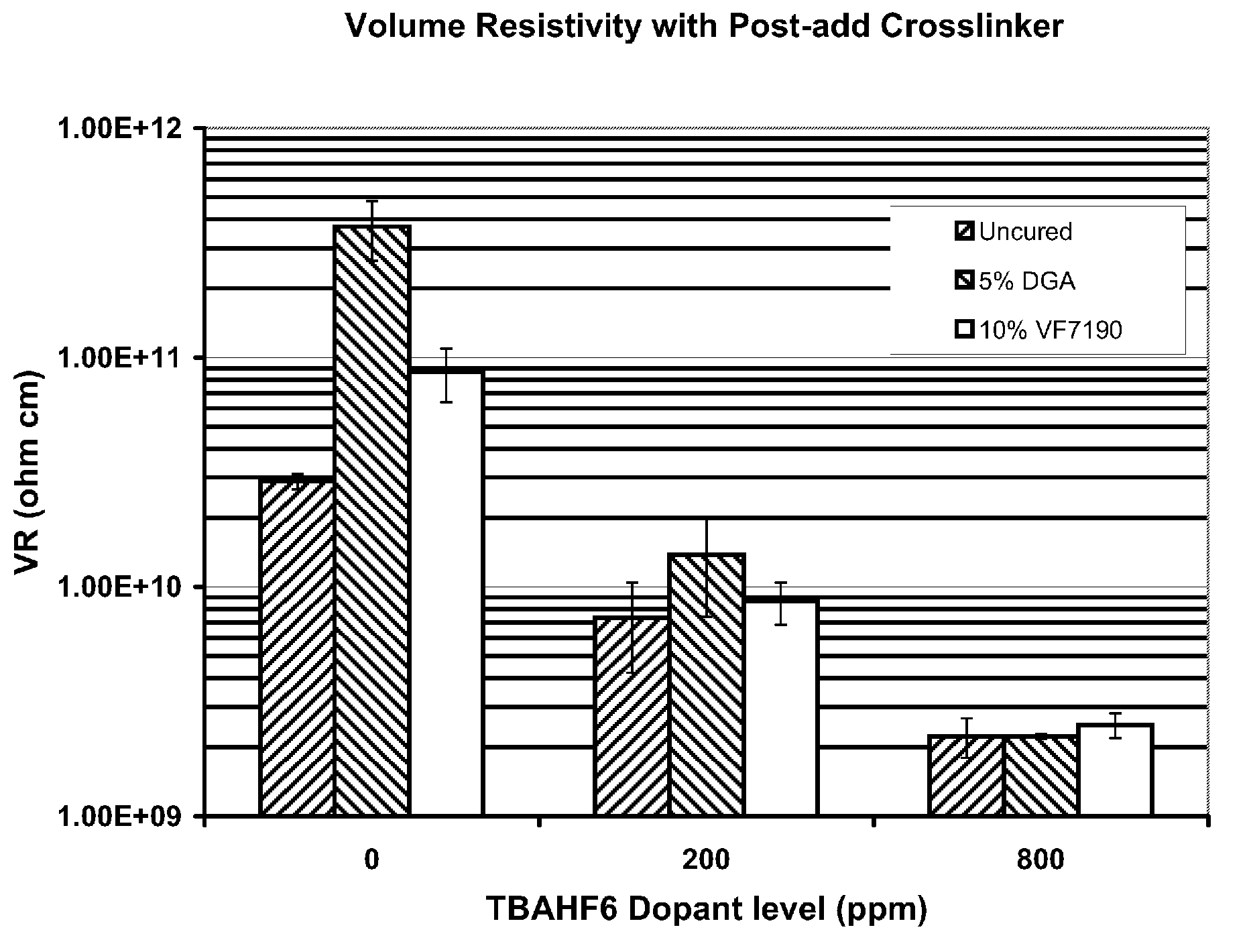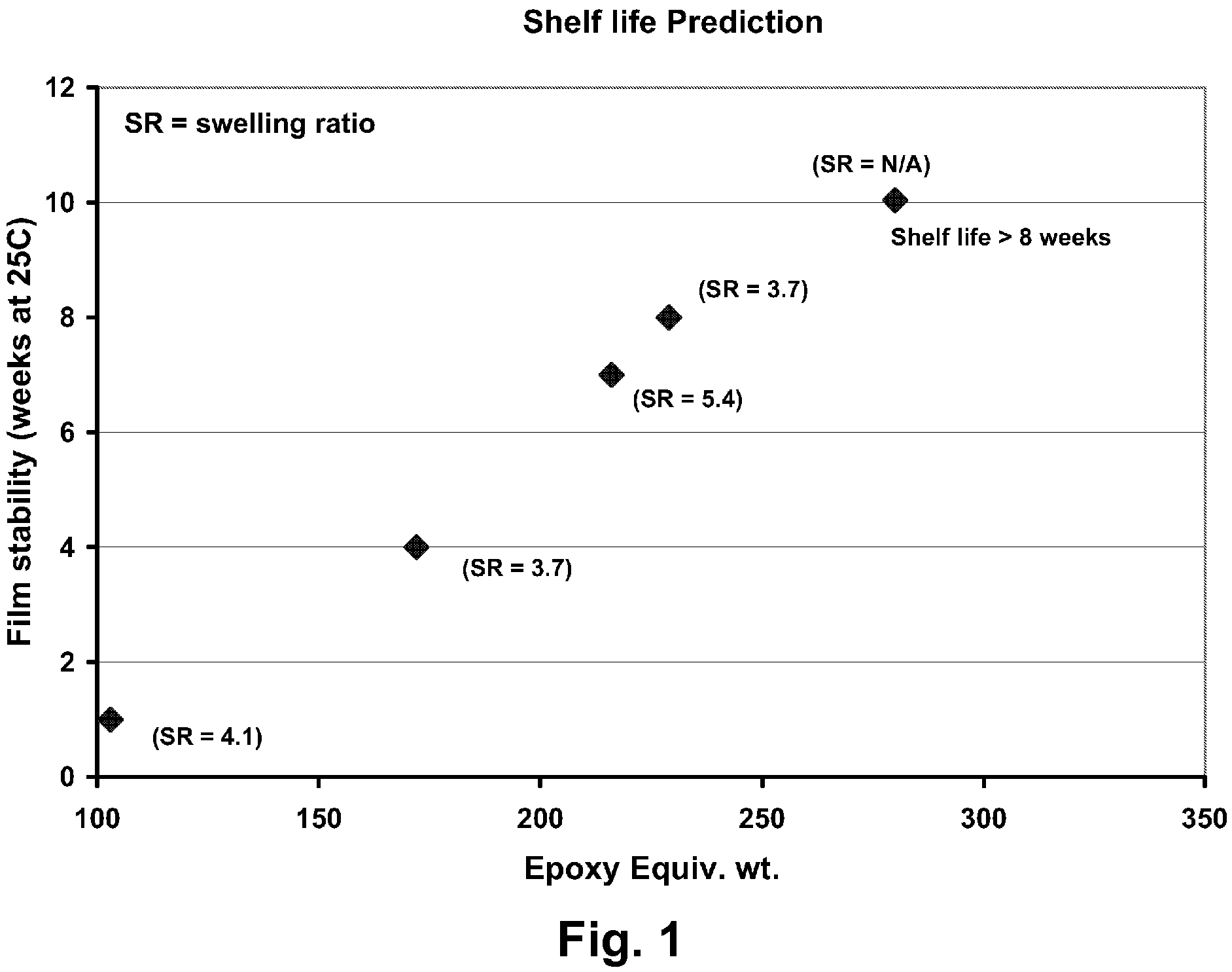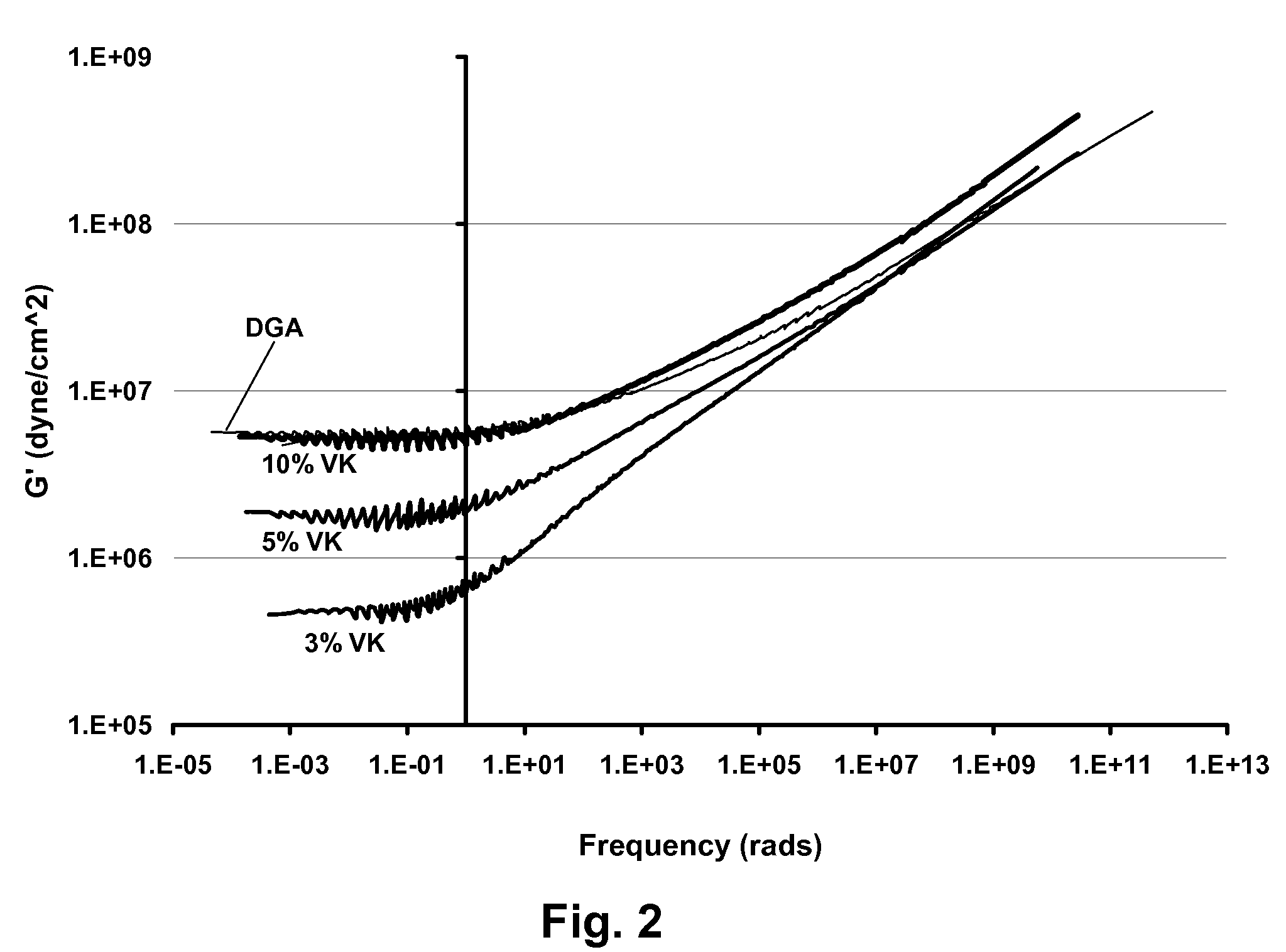Electro-optic displays, and materials for use therein
a technology of optical displays and materials, applied in the field of optical displays, can solve the problems of inadequate service life of optical displays, unable to meet the needs of instrumentation, and gas-based electrophoretic media are susceptible to the same types of problems, and achieve the effect of reducing the volume resistivity of the adhesive layer
- Summary
- Abstract
- Description
- Claims
- Application Information
AI Technical Summary
Benefits of technology
Problems solved by technology
Method used
Image
Examples
example 1
Screening of Possible Cross-Linking Agents
[0101]Various commercial cross-linking agents, including carbodiimides, melamine-formaldehyde, blocked isocyanates, epoxy diluents etc. were screened to determine film stability and cross-linking level. Each cross-linking agent was added slowly to a custom aqueous polyurethane dispersion while mixing with low to medium shear with a paddle blade. The polyurethane dispersion was prepared from tetramethylxylene diisocyanate and polypropylene glycol polymer, as described in U.S. Patent Application Publication No. 2005 / 0124751. After the addition of the cross-linking agent to the dispersion has been completed, mixing was continued for 30 minutes and then the dispersion was allowed to sit for one hour before coating a film of the adhesive composition was coated on to a poly(ethylene terephthalate) (PET) substrate. To determined the stability of the coated films against cross-linking, samples of the coated films were stored at room temperature (25°...
example 2
Evaluation of Other Epoxidized Fatty Acid Cross-Linking Agents
[0105]In view of the results shown in Table 2 above, additional epoxidized fatty acid cross-linking agents were evaluated in the same way as in Example 1, and the results are shown in Table 3 below.
[0106]
TABLE 3SampleEpoxy85° C. cure (50 hrs, N2)(% x-linker basedequivalent25° C. cureSwelling in Acetoneon solids)wt.(weeks)(Lf / Li)3Diglycidyl1034.1aniline (5%)(6 days)Vikoflex1724-53.77190 (10%)Vikoflex280>8 weeksDe-wetted4050 (10%)Vikoflex2166-75.49080 (10%)Vikoflex2297-83.77170 (10%)
[0107]The data in Table 3 confirm that epoxidized fatty acids and esters give good adhesive film stability and high cross-linking density.
[0108]Further experiments were conducted to confirm that the increase in film stability time at low temperatures experienced with DGA was also found with the epoxidized fatty acid esters. For this purpose, adhesive compositions containing 8.6 and 14.3 percent by weight (on a solids basis) of Vikoflex 7190 were...
example 3
Direct Mechanical Analysis Results
[0110]Adhesive compositions containing the same polyurethane as in the previous Examples and 3, 5 and 10 percent (on a solids basis) of Vikoflex 7190 and 5 percent (on a solids basis) of DGA were prepared. Each composition was coated on to a release sheet and dried at 25° C. for approximately 24 hours, the coating weight of the dispersion being controlled so that an adhesive layer 50 μm thick was formed on the release sheet. The adhesive layer was then cured at 85° C. for 50 hours in a nitrogen-purged oven.
[0111]The cured adhesive layer was peeled from the release sheet and folded into multiple thicknesses to provide an adhesive layer sufficiently thick for shear modulus testing, which was conducted on a Dynamic Mechanical Analyzer, Model RDA III. The results were converted to corresponding values at 70° C., and the results are shown in FIG. 2 of the accompanying drawings. From FIG. 2 it will be seen that (as expected) the shear modulus (stiffness) ...
PUM
| Property | Measurement | Unit |
|---|---|---|
| temperatures | aaaaa | aaaaa |
| resistivities | aaaaa | aaaaa |
| temperature | aaaaa | aaaaa |
Abstract
Description
Claims
Application Information
 Login to View More
Login to View More - R&D
- Intellectual Property
- Life Sciences
- Materials
- Tech Scout
- Unparalleled Data Quality
- Higher Quality Content
- 60% Fewer Hallucinations
Browse by: Latest US Patents, China's latest patents, Technical Efficacy Thesaurus, Application Domain, Technology Topic, Popular Technical Reports.
© 2025 PatSnap. All rights reserved.Legal|Privacy policy|Modern Slavery Act Transparency Statement|Sitemap|About US| Contact US: help@patsnap.com



